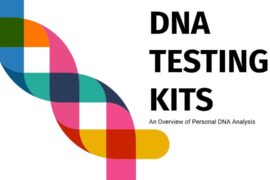Consumer Tech for April
This is Richard Sherwin with Consumer Tech for Wachs Media and Digital Family Advisor.
It’s T-Time again and I don’t mean spring golf outings. It’s the time of year…. next to Black Friday and Cyber Monday… that consumers purchase Televisions, Tablets and Telephones at a brisk pace for Mother’s Day, Father’s Day and Graduation gifts. So, we will give you our top choices.
In the first part of this three-part series, let’s start with the new TVs that are previewed in the winter but get to the stores in the April and May.
If you have the money, you can’t go wrong with the top of the line Samsung’s QLED series or Sony’s OLED 4K TVs for around $2,500, but the average person who doesn’t want to spend that much can still get a 50 inch or more 4K set by purchasing midlevel Samsung or Sony models.
You can save money in every category (as much as $300 a set) by buying a TV without “Smart TV” features. If you have an inexpensive Roku set top box… or an Amazon Fire TV set top box or Google Chromecast add-on. If you want to save even more money and still have 4K, Hisense, the Chinese American company, a newcomer no longer, is producing 55 inch and bigger models for under $650 that are as good as Samsung’s mid to top of the line models and have better sound.
If you are budget conscious or this TV is for the college dorm, extra bedroom or small den, then Visio, a former market leader which was sold last year, is still a decent choice for a 4K model, and you can find really good deals on LG, fast becoming a high-end manufacturer again at Costco and BJs.
LG successfully competes with Samsung and Sony at the $2,500 level, but seems to have more high quality, mid-priced models than its competition. Our only beef with LG is that their TV remotes use a form of Android that makes their Smart TVs dumb or maybe their customers dumber, the devices are so confusing.
The budget brands known in the industry as the third tier or off brands, like TCL, Sanyo, Sceptre, Insignia, Westinghouse Digital and others, all make some form of 4K next gen TV but not that much lower in price than the top manufacturers, so we don’t advise taking a chance at the higher end.
But the budget brands in a lower HD format 1080P, are good enough for kids’ room, kitchen, basement, porch are all under $300…. sometimes under $200.
Watch out for the budget brands or even some of the top brands, in that that some models may not have enough HDMI inputs. With so many consumers using added set top products like Blue Ray Players, Roku, Nintendo and Sony video game systems, Apple TV, Kodi and the Cablebox itself, you may run out of room for those products to be connected to your TV.
By the way, several brands have Roku built in and, while convenient, we still didn’t find them as easy to use as a standalone Roku which is priced from $39 to $239.
Our buzzword cheat sheet is:
4K…. the latest high resolution TV picture… nearly four times the resolution of HDTV and known as Ultra High Definition or UHD1.
HDMI stands for High-Definition Multimedia Interface. These cables provide high res video and audio in one cable instead of the usual five. HDMI2 ports and cables allegedly can carry more video and audio data making for better pictures and sound.
HDR: HDR, or High Dynamic Range, supposedly expands the range of both contrast and color significantly. Lighter segments of still and moving images can get much brighter, so the image appears to have more “depth.” Colors get expanded to show lighter blues, greens, reds and the color spectrum is expanded.
OLED: stands for Organic Light Emitting Diode. Each pixel in an OLED display… including home TVs, sign boards, and professional video solutions, is made of a material that glows when you touch it with electricity. This effect is called electroluminescence. Each tiny OLED pixel in the screen creates light depending on how much electric current that is connected to it. So more power, more light. No current, no light. Some experts believe that’s the best balance for screen and light. (Philips, Panasonic and Sony are the leading proponents of OLED technology.
QLED: Quantum emitted diods is Samsung’s much praised new screen technology. First used in devices such as the Amazon Kindle Fire HDX 7 and HDX 8.9 tablets bringing unusually bright and clear video .quantum-dot technology dots are tiny particles of between two and 10 nanometers in diameter. They’re employed in displays due to their ability – in conjunction with other materials – to give off different colors according to their size. The supposed advantage of this is that these dots are capable of emitting brighter, more vibrant, and more diverse colors than arch rival OLED.
Quantum-dot TVs are also considered to be more cost-effective to manufacture than OLED ones, meaning consumers can enjoy comparable or even better picture quality at a lower price. According to some industry gurus, the negatives assigned to QLED . is contrast ratios, with OLED displays generally thought to be able to produce the deepest blacks.
(Coming Soon: The best Tablets, Mobile Phones and home phones).
RELATED ARTICLES

- in: Featured
- Post by:

- in: Featured
- Post by:

- in: Consumer Tech, Featured, Technology - How To
- Post by:

